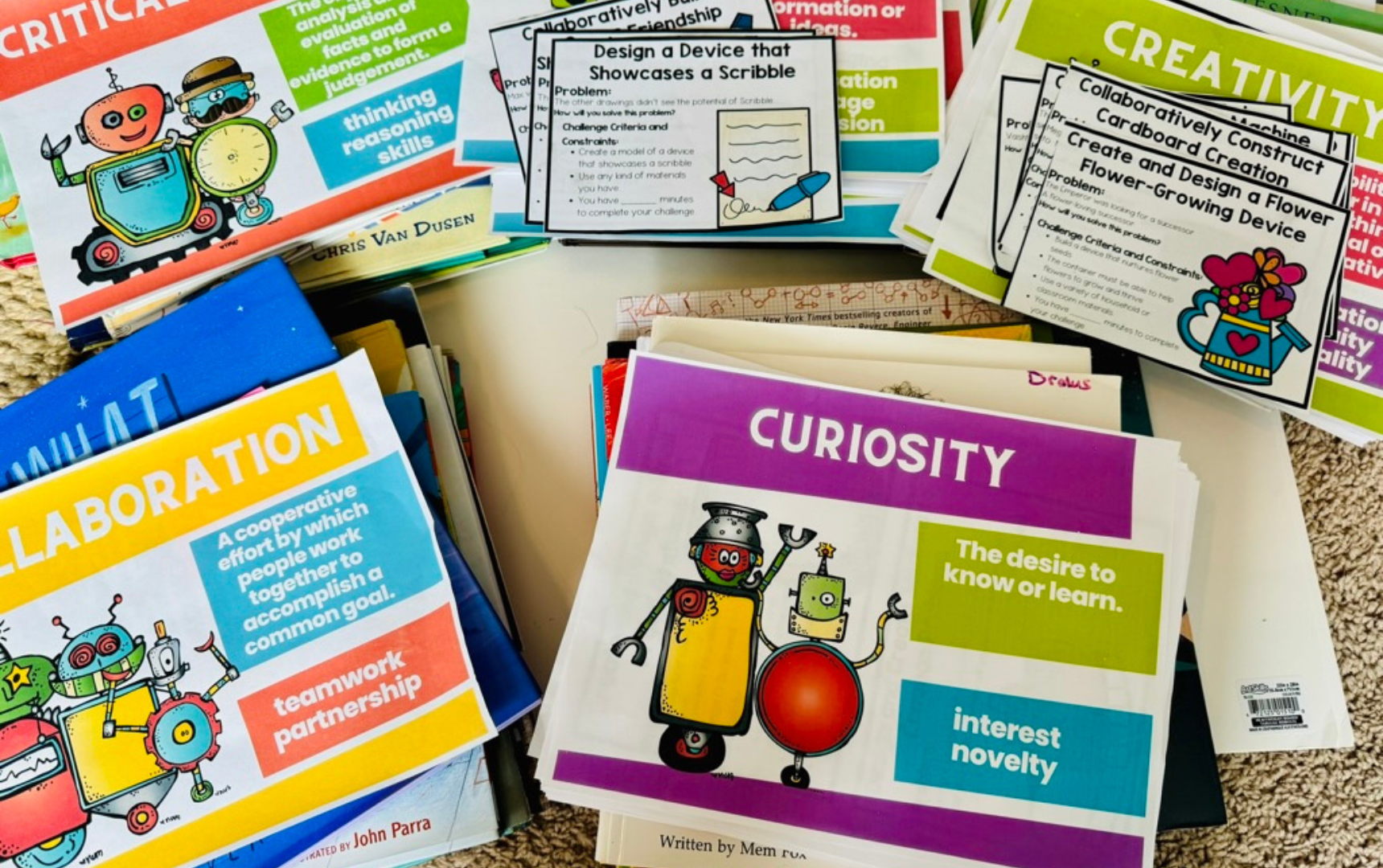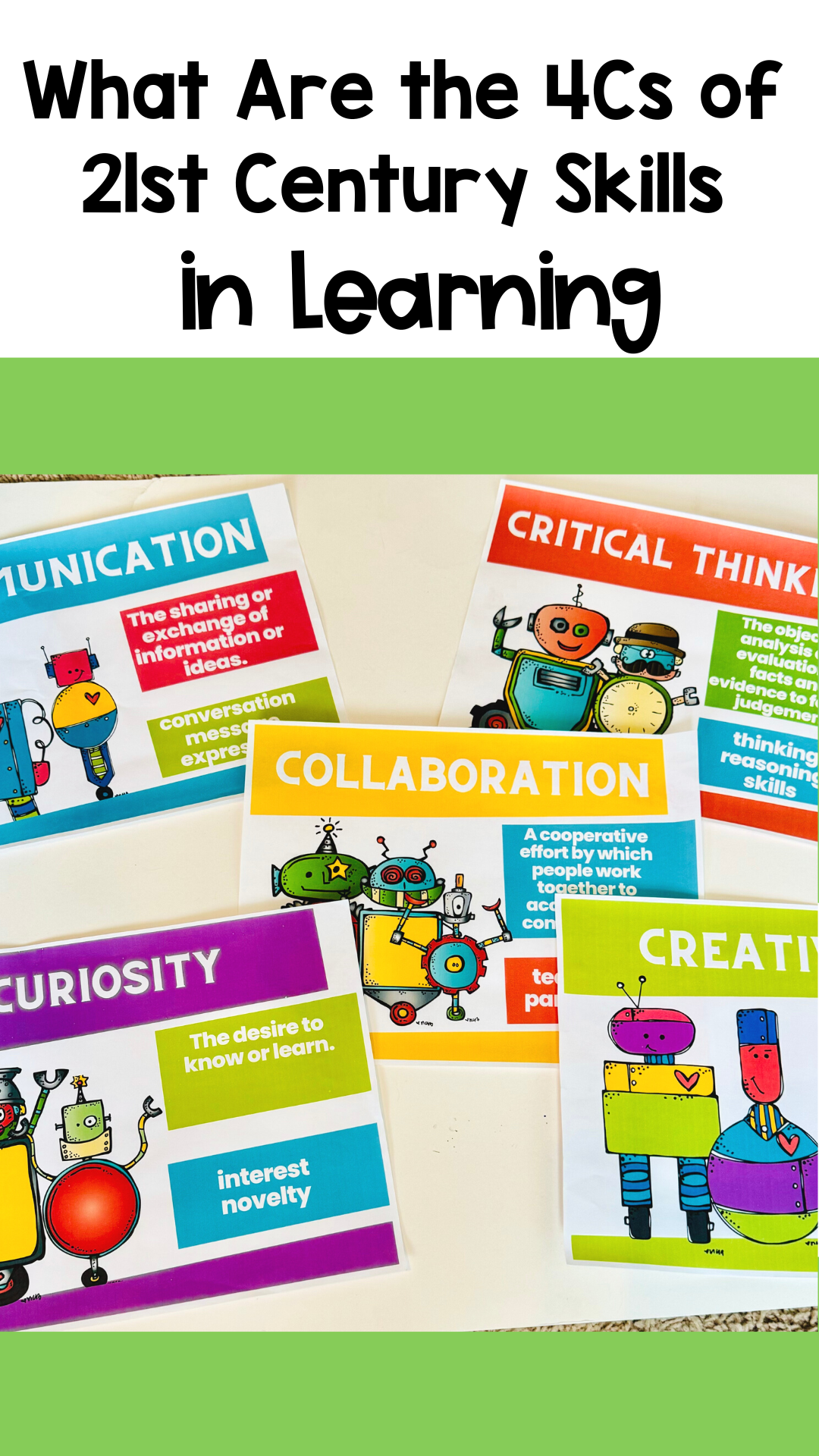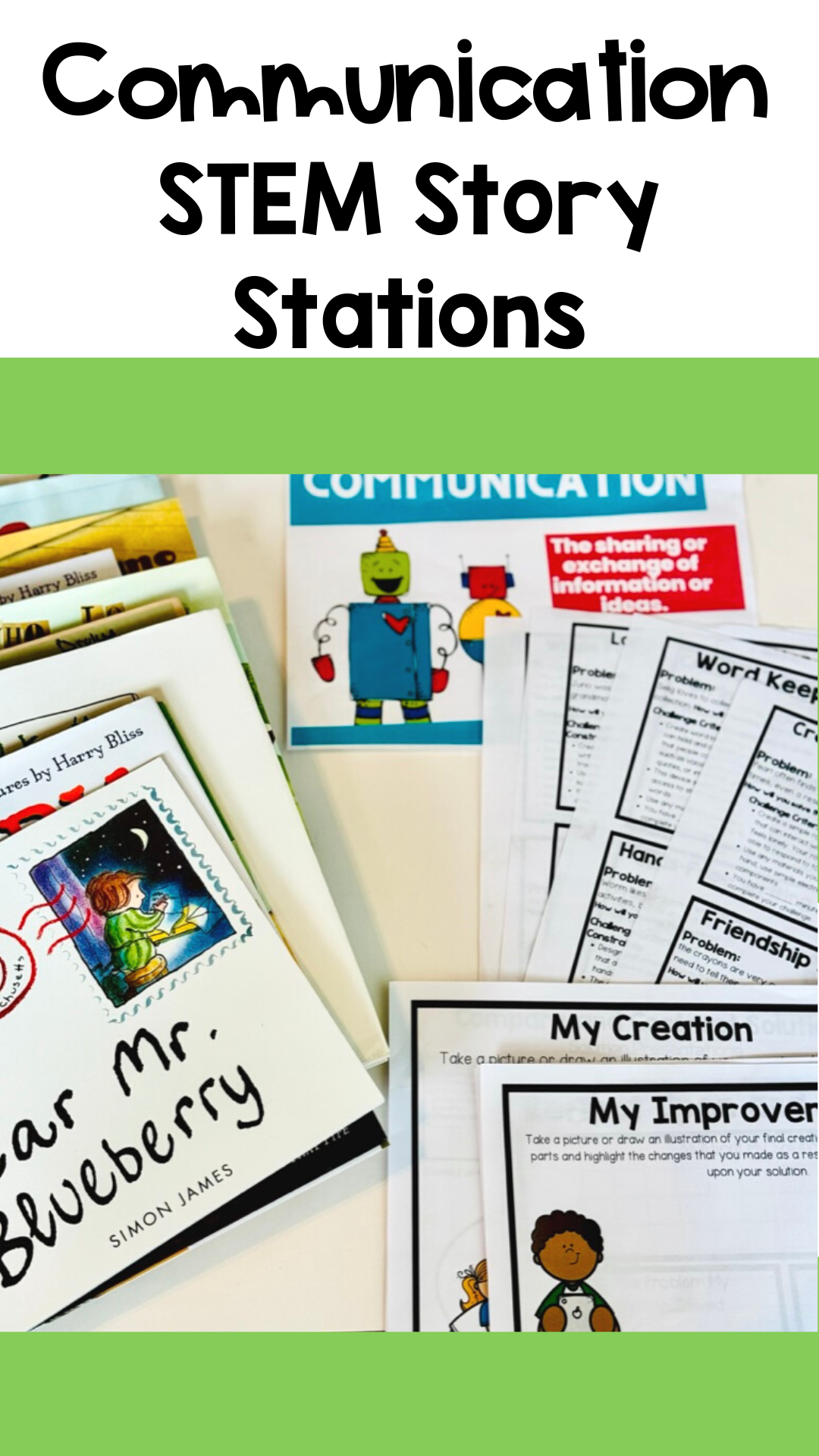What Are the 4Cs of 21st Century Skills in Learning
*This post contains affiliate links.
Welcome to the era of 21st-century learning, where traditional education meets the demands of a rapidly evolving world.
In this digital age, it's not just about memorizing facts and figures anymore; it's about cultivating skills that empower students to navigate a complex and interconnected global landscape. Enter the 4Cs of 21st-century skills – critical thinking, communication, collaboration, and creativity – the pillars that propel education towards a common goal: equipping learners with problem-solving prowess beyond textbooks and into real-world scenarios.
I also like to add in a 5 C, curiosity. Curiosity moves children to the unknown! In hopes of finding answers to common problems, we explore the world around us. So, let's explore how these four or five essential skills shape the future of education and prepare students for success in an ever-changing world!
What are the 4Cs of 21st Century Skills?
Regarding 21st-century skills, the 4Cs are the ultimate superheroes of learning. These skills give problem-solving a new frame of reference. Forget social media. Let's instead find new ways to get kids thinking and learning and dreaming up new ideas to save today's world!
Communication
First, we have Communication, the smooth-talker who can convey ideas with clarity and charisma. Like a master storyteller, this C brings life to dry facts and figures, sparking lively dialogues and fostering deep understanding. Communication skills are crucial for our future business leaders, as well as life skills and everyday life. Communication plays a huge part in our social skills inside and outside the classroom.
Creative Thinking or Creativity
Next in line is creative thinking or creative skills, the innovative wizard who can turn any problem into a blank canvas ripe for colorful solutions. Unfettered by convention, this C dances on the edge of imagination and logic, conjuring possibilities where others see dead-ends.
Critical Thinking
Critical thinking isn't just about solving problems; it's about questioning assumptions and challenging the status quo with an insatiable thirst for knowledge. It's like being Sherlock Holmes or Jigsaw Jones in a world full of mysteries waiting to be unraveled. The most crucial part of critical thinking for kids is solving problems that are relevant to them today, where possible solutions are just an investigation away. Critical thinking skills and problem-solving skills play a huge factor in future success.
Collaboration
Collaboration is the secret sauce that turns individual brilliance into collective genius. In today's interconnected world, singular achievements can only take us so far; our ability to work seamlessly with others propels us toward meaningful progress.
Curiosity (Bonus C)
Curiosity serves as the spark that ignites creativity and drives innovation by fueling our desire to explore uncharted territories and unravel hidden truths. It's like having endless ideas waiting to be discovered around every corner. Curiosity helps students work through new knowledge and work as guiding principles toward solving the unknown from the past decade to the future.
These 4Cs plus bonus C aren't just buzzwords; they're the essential skills shaping today's learners into tomorrow's trailblazers.
In the age of information overload, it's no longer enough to absorb and regurgitate knowledge. The 5Cs of 21st-century skills in learning are the new power quartet paving the way for success in a rapidly evolving world.
In today's fast-paced world overflowing with information and ideas, mastering the 5Cs is not just an option; it's a secret passageway to success in all areas of life. Sharpening these skills means being ready to conquer challenges with flair and finesse while standing out as a beacon of ingenuity in a sea of uninspired conformity. So buckle up and get ready to elevate your game—these five Cs are about to take you on an exhilarating ride through the thrilling terrain of 21st-century learning!
What Do the 4Cs Stand for?
Ah, the 4Cs – not just a catchy rhyme but also the cornerstone of modern education. In today's school systems, the 4Cs stand for critical thinking, communication, collaboration, and creativity, with a bonus C being- curiosity. These five skills are no longer optional add-ons but are now recognized as essential components to equip students with the educational expertise needed to thrive in the 21st century.
Yes, these skills improve literacy skills and understanding of educational technology and digital tools and are also a great way to learn and think. You can focus on the Cs of 21st-century learning in small groups or as innovation skills in whole-group activities. There are so many different ideas and different perspectives for incorporating the 5 Cs.
Critical thinking involves more than just problem-solving; it's about analyzing, evaluating, and synthesizing information to make informed decisions. Communication goes beyond basic verbal exchange; it also encompasses effective written and digital communication. Collaboration isn't simply group work; it's about working effectively with diverse teams and respecting multiple perspectives. Lastly, creativity doesn't only apply to art class; it's about fostering innovation and adaptability in all academic disciplines.
The good news is the 4Cs aren't just buzzwords thrown around in educational circles; they represent a paradigm shift in how we approach learning. By emphasizing these skills alongside traditional academics, schools are preparing students to be agile thinkers who can tackle real-world challenges with confidence and flair with higher order thinking. So, let's raise a toast to the 4Cs – shaping students' minds and futures.
How Do You Teach the 4Cs?
We are going to look at the 5cs in a different light. We will focus on different ways to recognize the skills inside children's literature. Using stories and books is an easy way for kids to see themselves inside of the behavior or the skills.
1. Essential Questions
We are going to start with a group discussion on essential questions. You might use the following essential questions:
How do readers determine the central theme?
How does communication play a role in our society?
How do makers make and use a model?
How do makers work with others to investigate, collect data, and make predictions?
2. Examples of the 5Cs
Next, provide students with many examples of each of the 5 Cs.
Here is where you will want to provide different views of each skill. You can do that with visual aids and literature! Then, allow students to work through problems inside each book. Students can work through the engineering design process to integrate STEM and design thinking!
3. STEM Story Stations
Imagine a world where kids embark on exciting adventures while learning about STEM concepts. Enter Stem Story Stations! This innovative approach combines the 5 Cs (communication, collaboration, critical thinking, creativity, and curiosity) with simple materials to create interactive stations that immerse children in scientific exploration. By integrating literature into these hands-on activities, young minds are engaged in storytelling and problem-solving, making learning educational and incredibly fun.
The beauty of Stem Story Stations lies in their ability to spark curiosity and inspire a love for science at an early age. Through captivating narratives and cleverly designed challenges, children are encouraged to think outside the box and apply their knowledge in a practical setting. Whether building a bridge for Iggy Peck or creating a futuristic gadget for a space adventure, these stations foster a sense of wonder and excitement that ignites a lifelong passion for STEM subjects. So buckle up and get ready to witness the magic of Stem Story Stations unravel before your eyes!
Communication
Collaboration
Books Focused on Collaboration:
The Circles All Around Us by Brad Montague
We Move Together by Kelly Fritsch
We're Better Together: A Book About Community by Eileen Spinelli
We Are Better Together by Bill McKibben
What We'll Build by Oliver Jeffers
Hey Wall by Susan Verde
Thank You, Omu! by Obe Mora
Maybe Something Beautiful by F. Isabel Campoy & Theresa Howell
Click, Clack, Moo Cows That Type by Doreen Cronin
Stone Soup by Jon J. Muth
Critical Thinking
Books Focused on Critical Thinking:
Creativity
Books Focused on Creativity:
Curiosity (Bonus C)
Books Focused on Curiosity:
More Resources on the 4Cs
Thoughful Learning: What are the 4 C's of learning skills?
What Are the 4 C's of 21st Century Skills?
Conclusion for Teaching 4Cs
In conclusion, the 4Cs of 21st-century skills – critical thinking, communication, collaboration, and creativity – are the essential building blocks for success in today's ever-evolving world. As we continue to embrace digital innovation and global interconnectedness, these skills will become even more crucial for navigating the challenges and opportunities of the future. By prioritizing the development of these 4Cs in educational settings, we can empower students to think critically, communicate effectively, collaborate seamlessly, and unleash their creative potential.


















